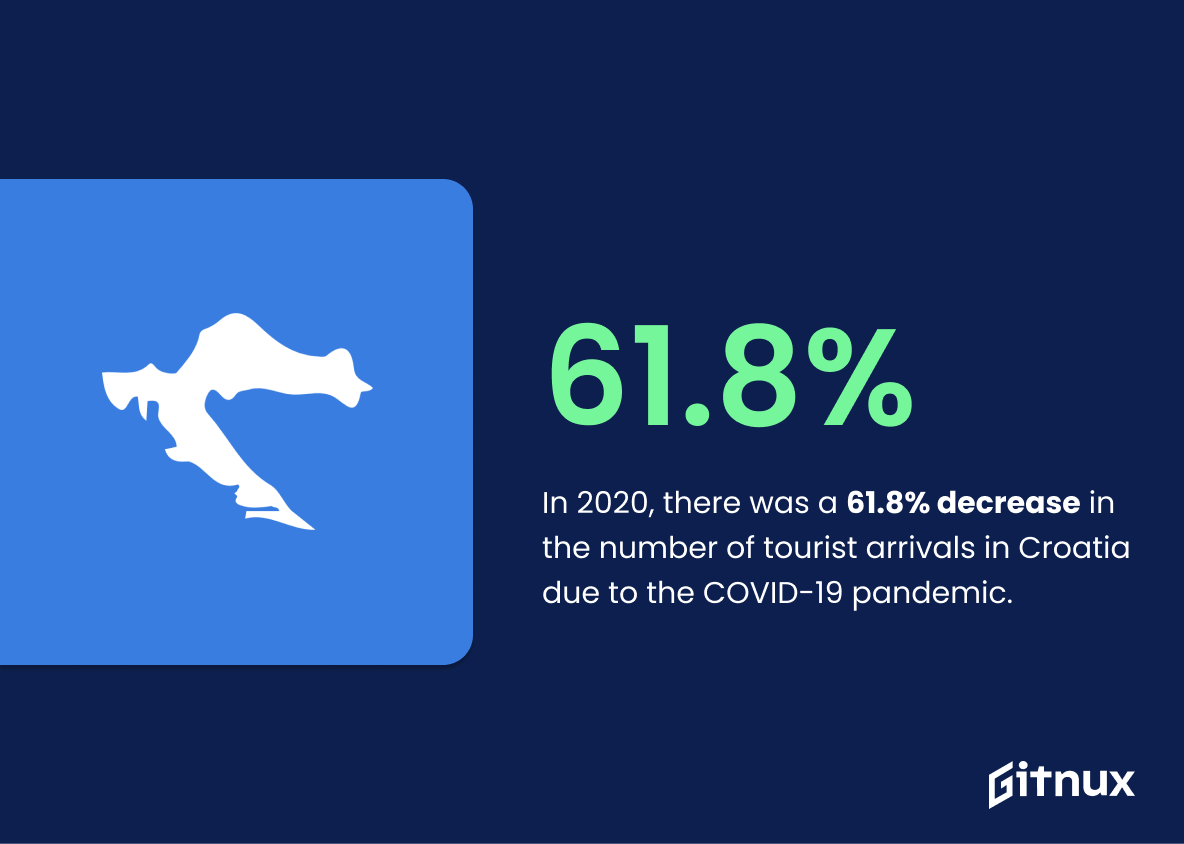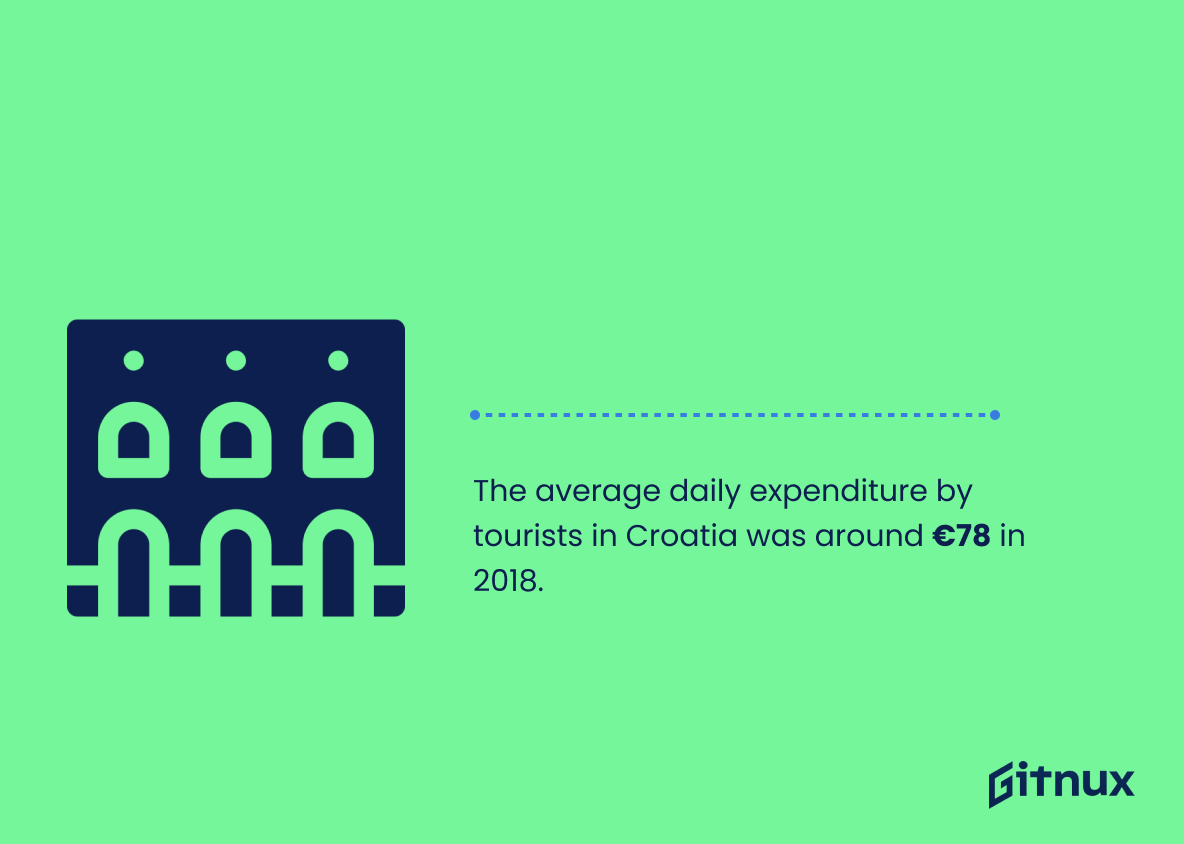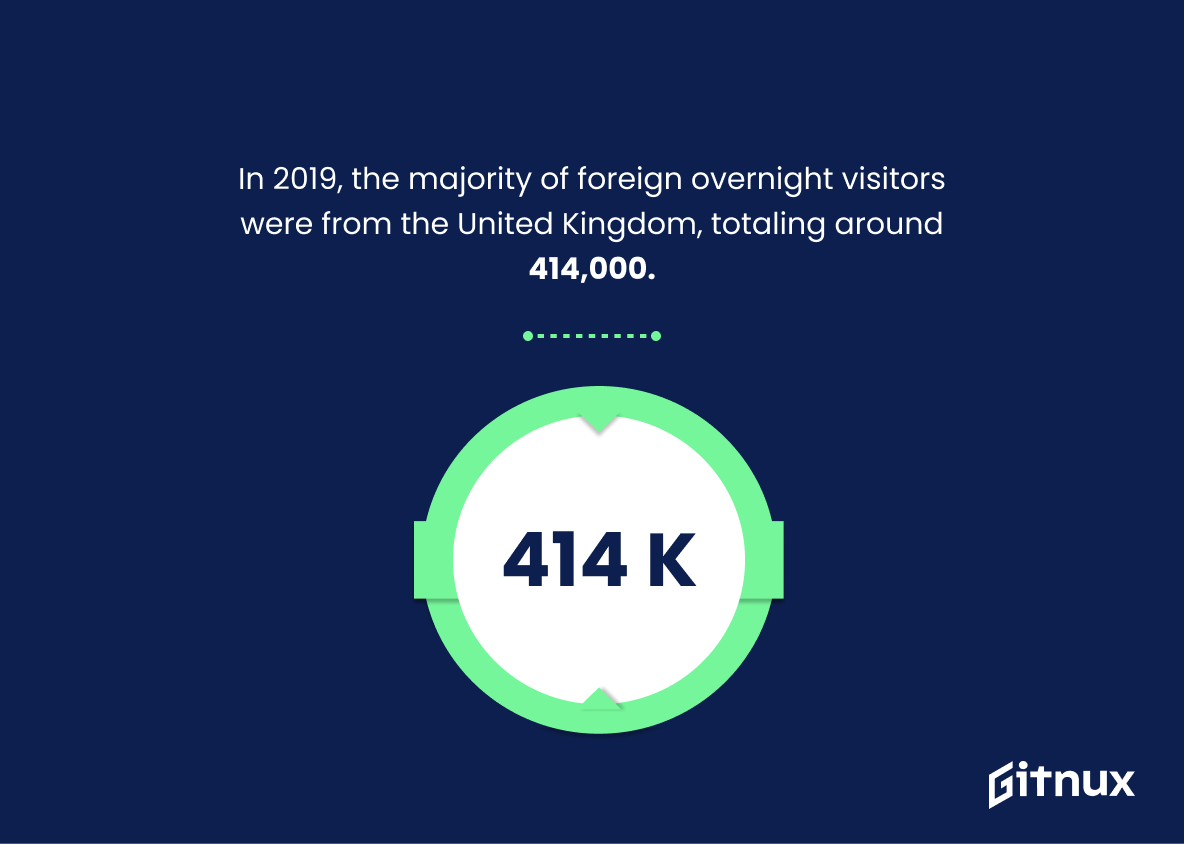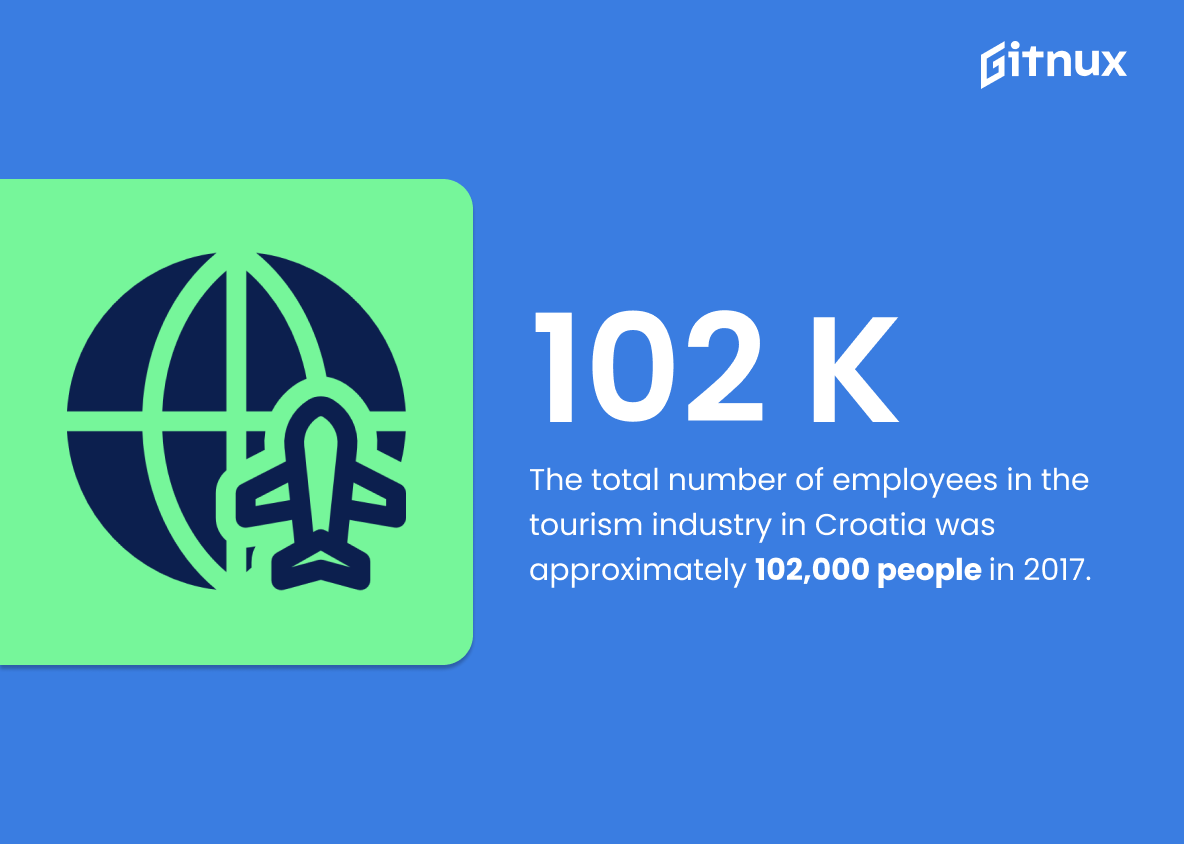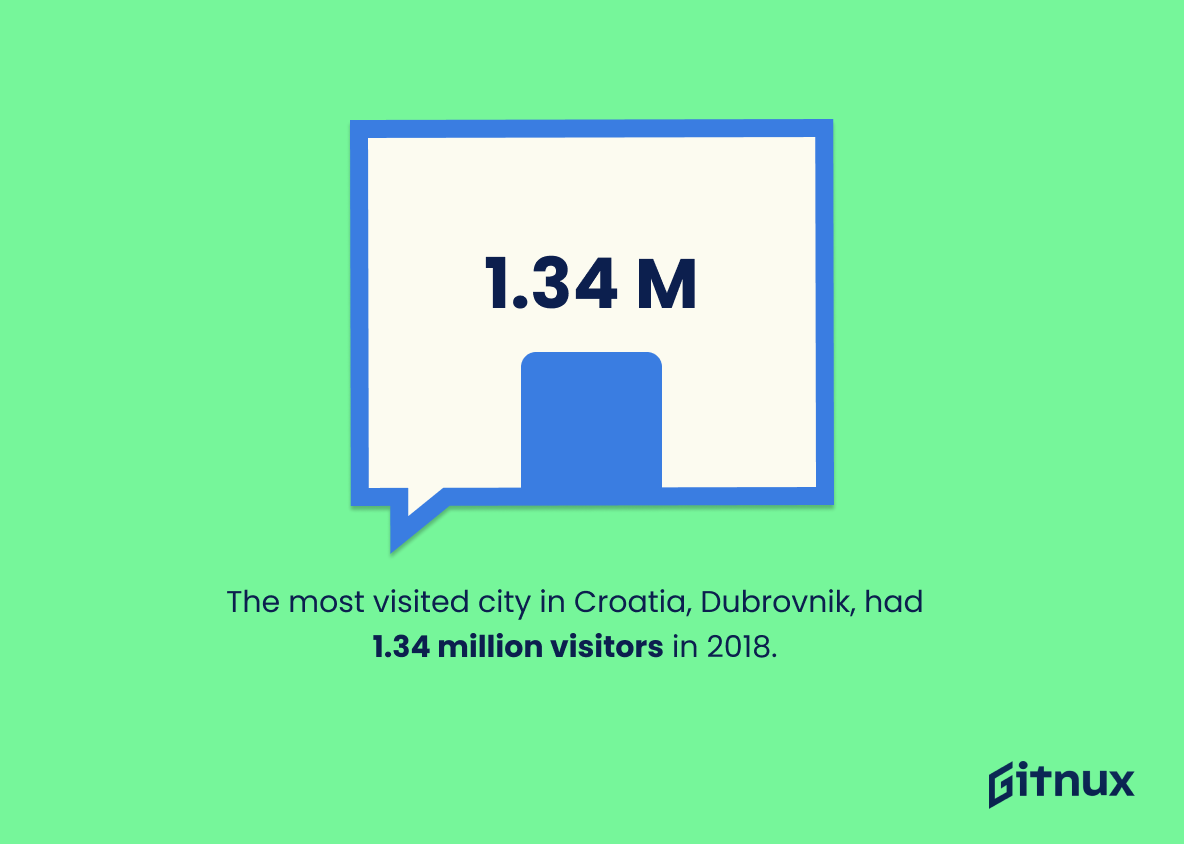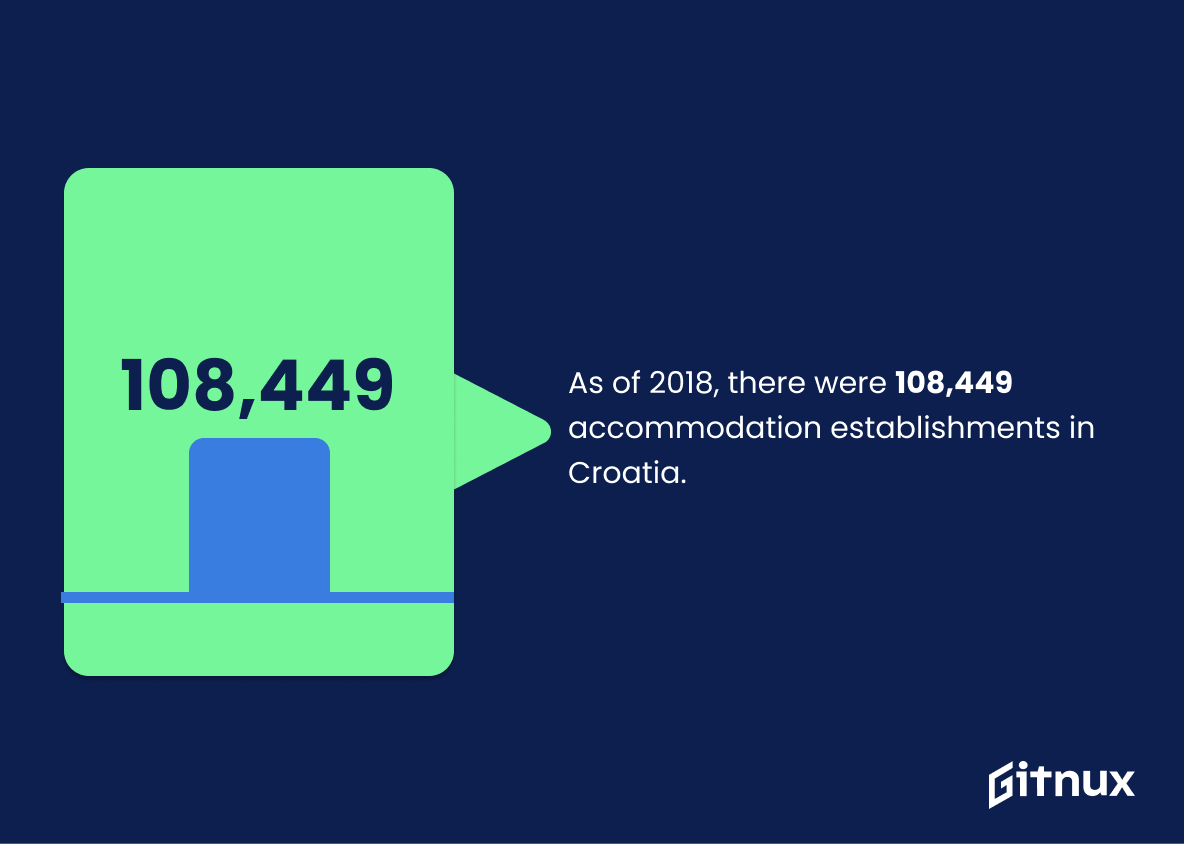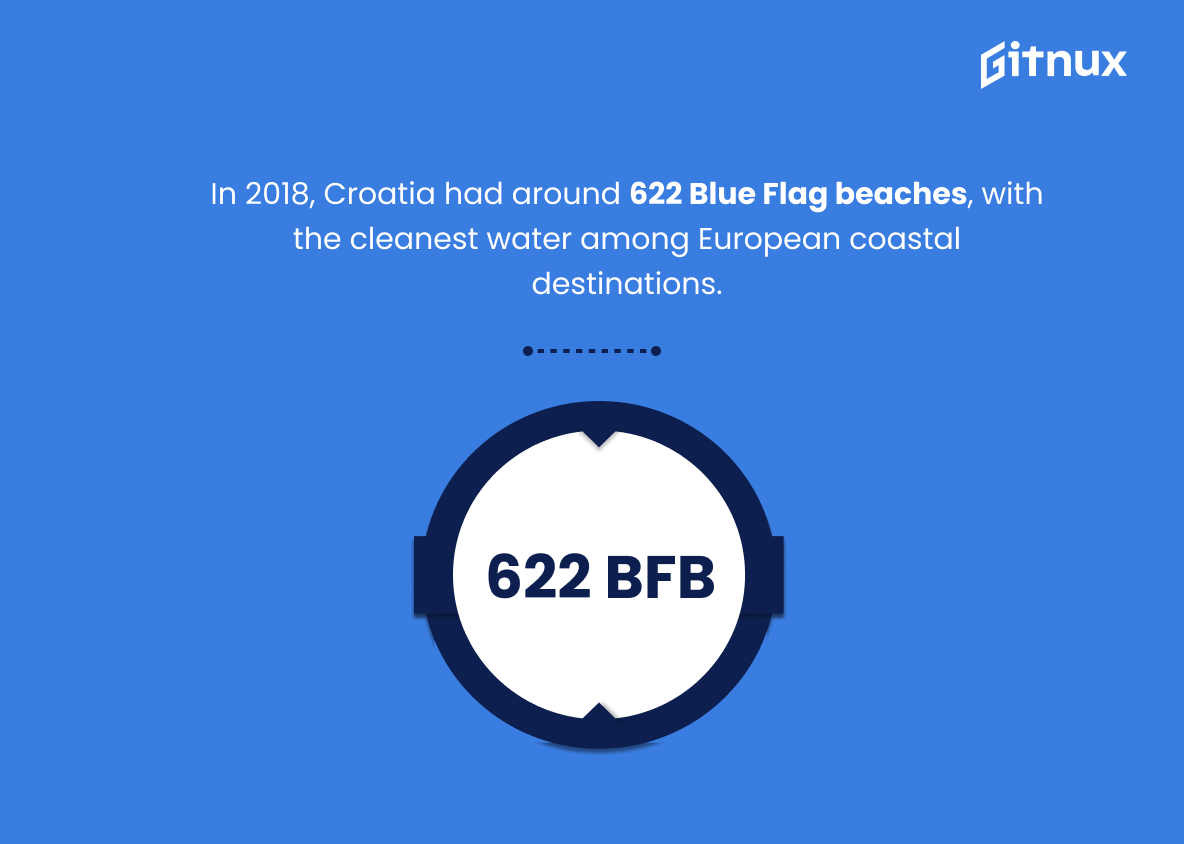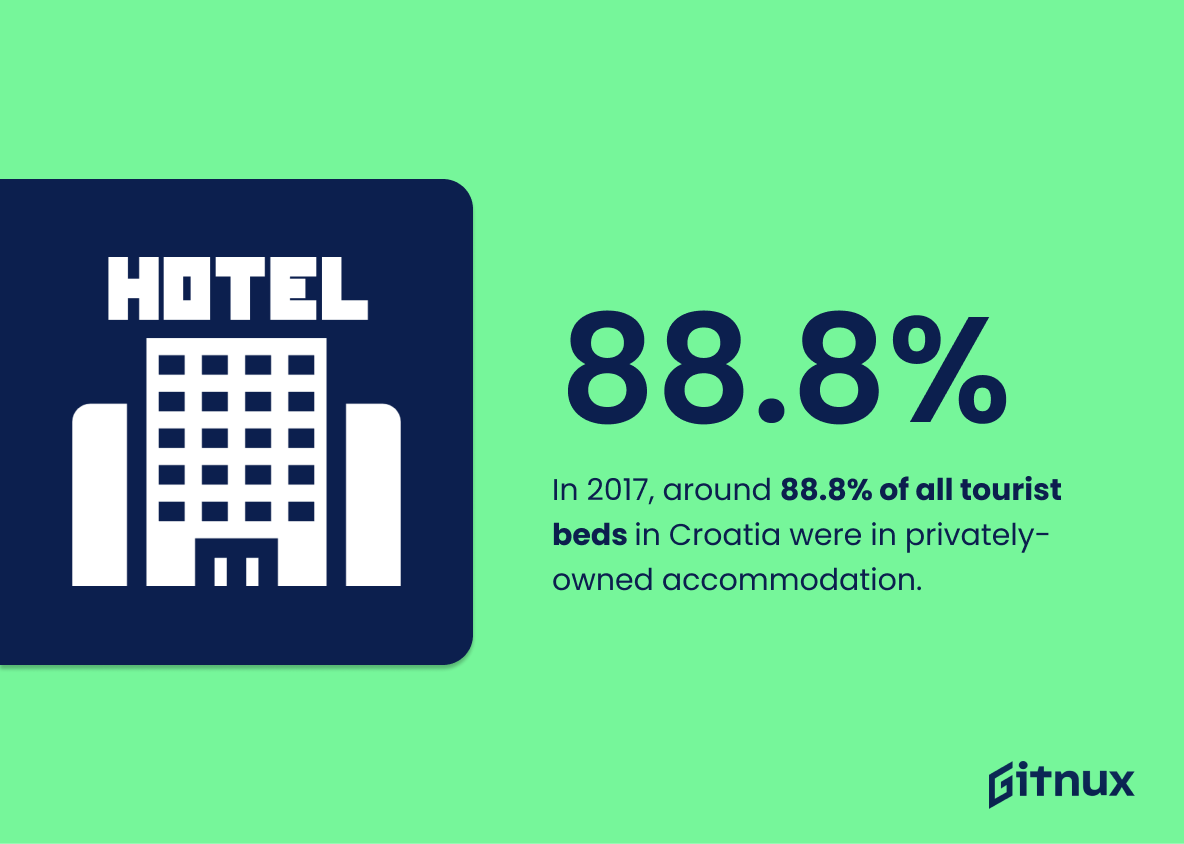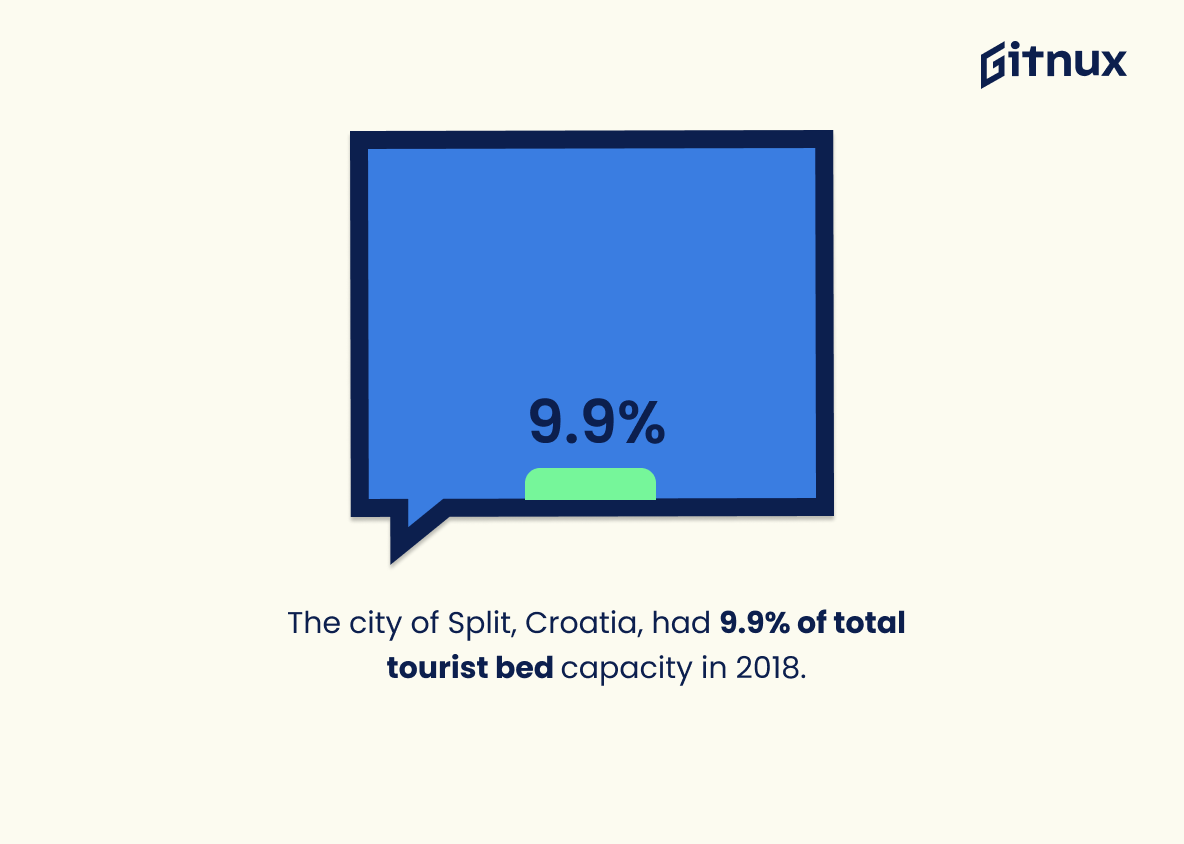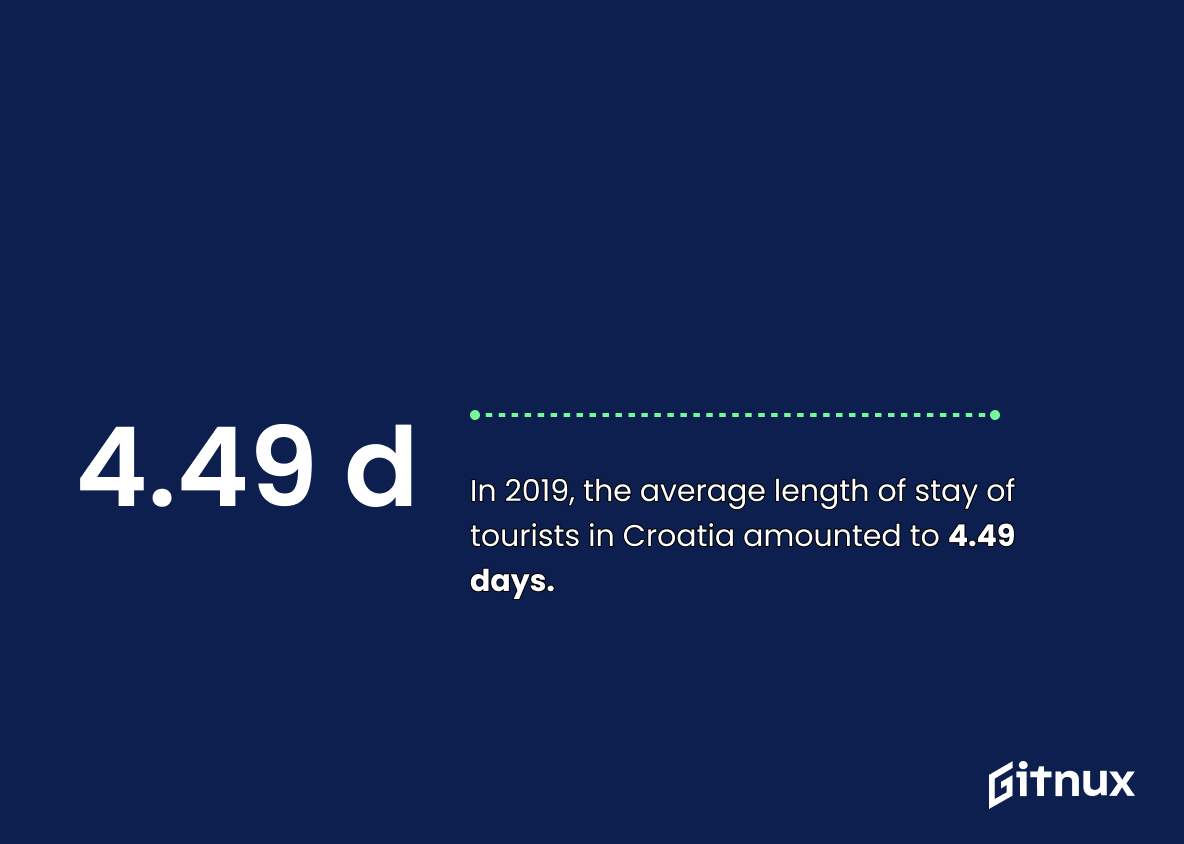Croatia is a beautiful country with stunning landscapes, rich culture and history, and plenty of attractions for tourists to explore. With its Mediterranean climate and picturesque coastline along the Adriatic Sea, it’s no wonder that Croatia has become one of Europe’s most popular tourist destinations in recent years. In this blog post we will be looking at some interesting statistics about Croatian tourism over the past few years – from 2018 when an all-time record was set for visitor numbers to 2020 when there was a drastic decrease due to the COVID-19 pandemic. We’ll also look at which countries are sending visitors to Croatia as well as how much money they’re spending while visiting. Finally, we’ll take a closer look at specific cities like Dubrovnik and Split where many tourists flock each year. So let’s dive into these fascinating facts about Croatian tourism.
The remarkable statistic of 18.4 million tourists in Croatia in 2018 is a testament to the country’s growing popularity as a tourist destination. This record-breaking number of visitors is a clear indication that Croatia is becoming an increasingly attractive destination for travelers from around the world. This is great news for the Croatian economy, as tourism is a major source of income for the country.
In 2019, tourism in Croatia contributed about 19.6 percent to the country’s GDP.
This statistic is a testament to the importance of tourism in Croatia’s economy. It shows that tourism is a major contributor to the country’s GDP, making it a vital part of the country’s economic success. This highlights the need for Croatia to continue to invest in its tourism industry in order to ensure its continued growth and prosperity.
Croatian Tourism Statistics Overview
In 2020, there was a 61.8% decrease in the number of tourist arrivals in Croatia due to the COVID-19 pandemic.
The 61.8% decrease in tourist arrivals in Croatia in 2020 due to the COVID-19 pandemic is a stark reminder of the devastating impact the pandemic has had on the tourism industry. This statistic serves as a powerful illustration of the immense challenges faced by the Croatian tourism sector, and the need for urgent action to ensure its recovery.
In 2017, the total revenue from tourism amounted to about 9.5 billion euros in Croatia.
The staggering figure of 9.5 billion euros in revenue from tourism in Croatia in 2017 is a testament to the country’s immense potential as a tourist destination. It is a clear indication that Croatia is a desirable destination for travelers from all over the world, and that its tourism industry is thriving. This statistic is a powerful reminder of the importance of tourism to the Croatian economy, and the need to continue to invest in and promote the country’s tourism industry.
The average daily expenditure by tourists in Croatia was around €78 in 2018.
This statistic is a telling indication of the success of Croatian tourism in 2018. It shows that tourists were willing to spend a significant amount of money while visiting Croatia, demonstrating that the country is a desirable destination for travelers. This statistic is an important part of understanding the overall success of Croatian tourism in 2018 and can be used to inform future decisions about the industry.
In 2019, Germans were the top nationality tourist in Croatia, with over 3.9 million arrivals.
This statistic is a testament to the popularity of Croatia as a tourist destination among Germans. It shows that Croatia is a desirable destination for German travelers, with over 3.9 million arrivals in 2019 alone. This is a clear indication that Croatia is a great place to visit and that it has a lot to offer to German tourists. This statistic is an important part of understanding the success of Croatian tourism and the impact it has on the country’s economy.
In 2019, the majority of foreign overnight visitors were from the United Kingdom, totaling around 414,000.
This statistic is significant in the context of Croatian Tourism Statistics because it demonstrates the potential for the country to attract more visitors from the United Kingdom. With 414,000 visitors from the UK in 2019, it is clear that there is a large market of potential tourists that Croatia can tap into. This could be a great opportunity for the country to increase its tourism revenue and boost its economy.
The total number of employees in the tourism industry in Croatia was approximately 102,000 people in 2017.
This statistic is a telling indication of the importance of the tourism industry in Croatia. It demonstrates that the industry is a major employer in the country, providing jobs for over 100,000 people in 2017. This is a powerful reminder of the economic impact of tourism in Croatia and the importance of the industry to the country’s economy.
The most visited city in Croatia, Dubrovnik, had 1.34 million visitors in 2018.
This statistic is a testament to the immense popularity of Dubrovnik as a tourist destination. With 1.34 million visitors in 2018, it is clear that Dubrovnik is a major draw for tourists looking to explore Croatia. This statistic is indicative of the overall success of Croatian tourism, and serves as a reminder of the potential for further growth in the industry.
In 2019, the number of cruise passengers landing in Croatia was 747,669, a 28% increase from 2018.
This statistic is a testament to the growing popularity of Croatia as a tourist destination. The 28% increase in cruise passengers in 2019 indicates that more and more people are choosing to visit Croatia, which is great news for the country’s tourism industry.
As of 2018, there were 108,449 accommodation establishments in Croatia.
This statistic is a testament to the sheer variety of accommodation options available in Croatia, making it an ideal destination for travelers of all kinds. With such a wide range of establishments, visitors can easily find a place to stay that suits their needs and budget. This is a key factor in the country’s success as a tourist destination, as it allows travelers to enjoy their stay without worrying about where they will sleep.
In 2018, Croatia had around 622 Blue Flag beaches, with the cleanest water among European coastal destinations.
The statistic that Croatia had 622 Blue Flag beaches in 2018 is a testament to the country’s commitment to providing pristine coastal destinations for tourists. This is a major draw for travelers looking for a beach vacation, as it ensures that the water is clean and safe for swimming and other activities. Additionally, it speaks to the overall quality of the country’s tourism infrastructure, which is essential for a successful tourism industry.
In 2017, around 88.8% of all tourist beds in Croatia were in privately-owned accommodation.
This statistic is a telling indication of the importance of privately-owned accommodation in Croatia’s tourism industry. It demonstrates that the majority of tourist beds in the country are provided by private owners, suggesting that the sector is a major contributor to the country’s economy. Furthermore, it highlights the potential for further growth in the sector, as there is still room for more privately-owned accommodation to be developed.
The city of Split, Croatia, had 9.9% of total tourist bed capacity in 2018.
This statistic is a testament to the popularity of Split as a tourist destination. It shows that the city is a major draw for visitors, accounting for nearly 10% of the total bed capacity in Croatia. This highlights the importance of Split to the Croatian tourism industry and the potential for further growth in the future.
In 2019, the average length of stay of tourists in Croatia amounted to 4.49 days.
The statistic on the average length of stay of tourists in Croatia in 2019 is a telling indicator of the country’s tourism industry. It shows that Croatia is a desirable destination for travelers, as they are willing to stay for an extended period of time. This statistic is a testament to the country’s attractions, hospitality, and overall appeal as a tourist destination.
In 2018, tourists in Croatia spent more than €300 million on cultural and entertainment events.
This statistic is a testament to the vibrancy of Croatia’s cultural and entertainment scene, demonstrating that tourists are eager to experience the country’s offerings. It is a clear indication that Croatia is a desirable destination for those looking to explore its culture and entertainment, and is a key factor in the country’s success as a tourist destination.
In 2020, the total number of tourist arrivals in Croatia decreased by 49.9% compared to the previous year.
This statistic is a stark reminder of the devastating impact the COVID-19 pandemic has had on the tourism industry in Croatia. It highlights the need for the Croatian government to take action to support the tourism sector and ensure that it can recover from the losses incurred in 2020.
In 2017, Croatia was ranked the 9th most Instagrammable destination in the world.
This statistic is a testament to the beauty of Croatia, and its ability to captivate the hearts of Instagram users around the world. It speaks to the country’s stunning landscapes, vibrant culture, and its potential to be a top tourist destination. It is a powerful indicator of the country’s potential to draw in visitors, and a great way to showcase the country’s beauty to potential travelers.
Revenue from campsite guests in Croatia grew by 16% between 2016 and 2017.
The fact that revenue from campsite guests in Croatia increased by 16% between 2016 and 2017 is a clear indication that the country’s tourism industry is thriving. This is great news for Croatia, as it shows that more and more people are choosing to visit the country and take advantage of its many attractions. This statistic is a testament to the hard work of the Croatian tourism industry and its commitment to providing a quality experience for its visitors.
In 2019, there was a 42.8% growth in Chinese tourist arrivals to Croatia compared to the previous year.
This statistic is a testament to the success of Croatian tourism, as it indicates a significant increase in Chinese tourist arrivals to the country. This growth in Chinese visitors is a positive sign for the Croatian tourism industry, as it suggests that the country is becoming increasingly attractive to international travelers. Furthermore, this growth could lead to increased economic benefits for Croatia, as Chinese tourists tend to spend more money than other tourists. Therefore, this statistic is an important indicator of the success of Croatian tourism and its potential for further growth.
Conclusion
Croatian tourism has seen tremendous growth in recent years, with record-breaking numbers of tourists visiting the country and contributing to its GDP. Despite a 61.8% decrease due to the COVID-19 pandemic in 2020, Croatia still remains an attractive destination for foreign visitors from all over the world. Tourists spent around €78 per day on average in 2018 and contributed more than €300 million towards cultural and entertainment events that same year. With 622 Blue Flag beaches boasting some of Europe’s cleanest water, 108,449 accommodation establishments across the country as well as 42.8% growth in Chinese tourist arrivals between 2018 and 2019 – it is no wonder why Croatia continues to be one of Europe’s most popular holiday destinations.
References
0. – https://www.www.htz.hr
1. – https://www.ec.europa.eu
2. – https://www.www.total-croatia-news.com
3. – https://www.www.inequality.org
4. – https://www.www.statista.com
5. – https://www.www.croatiaweek.com
6. – https://www.knoema.com
